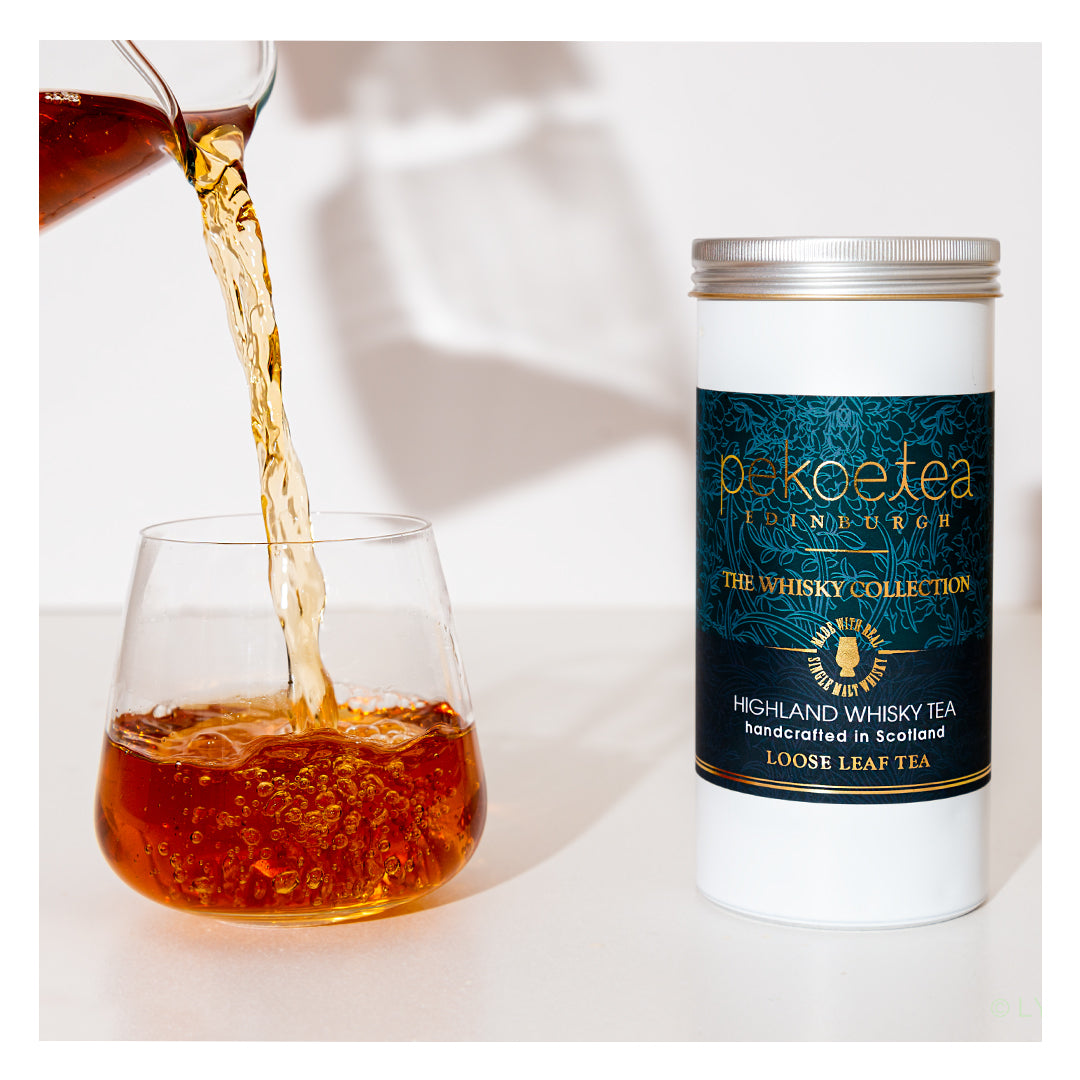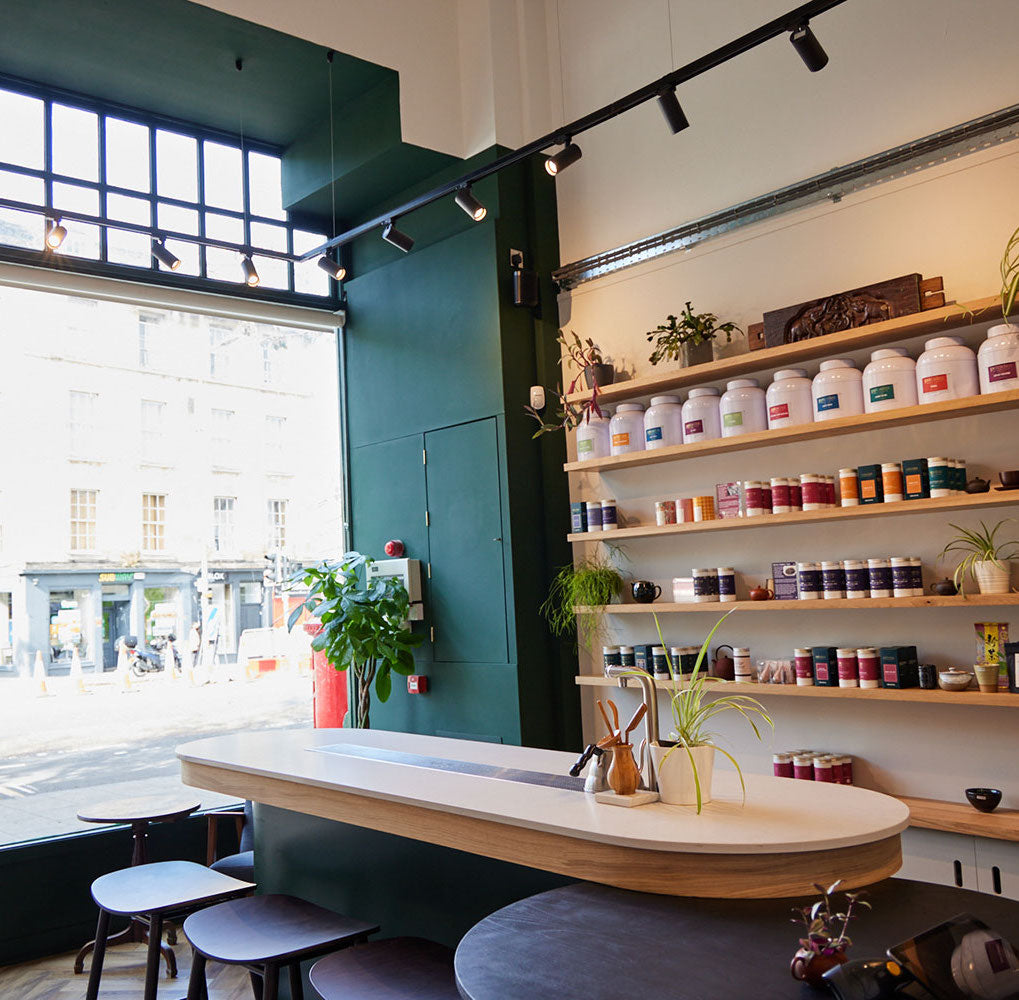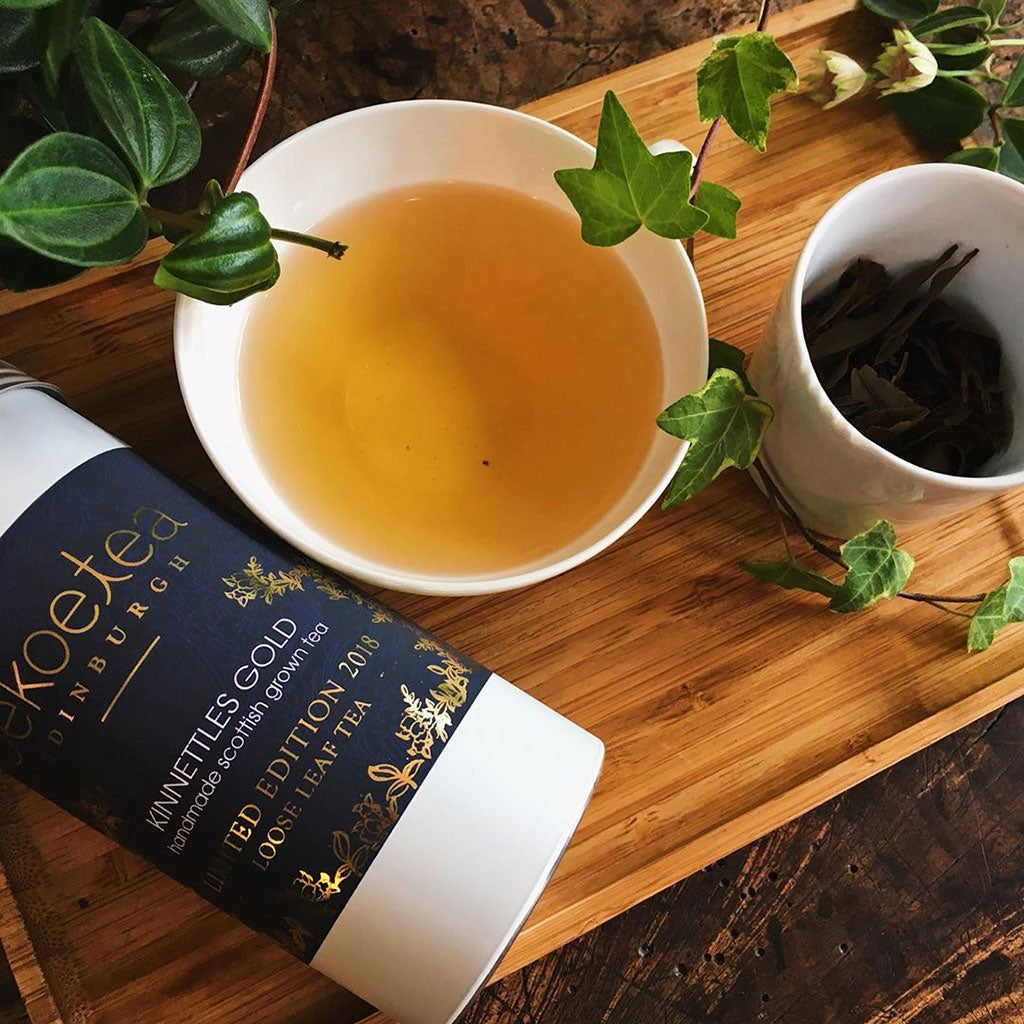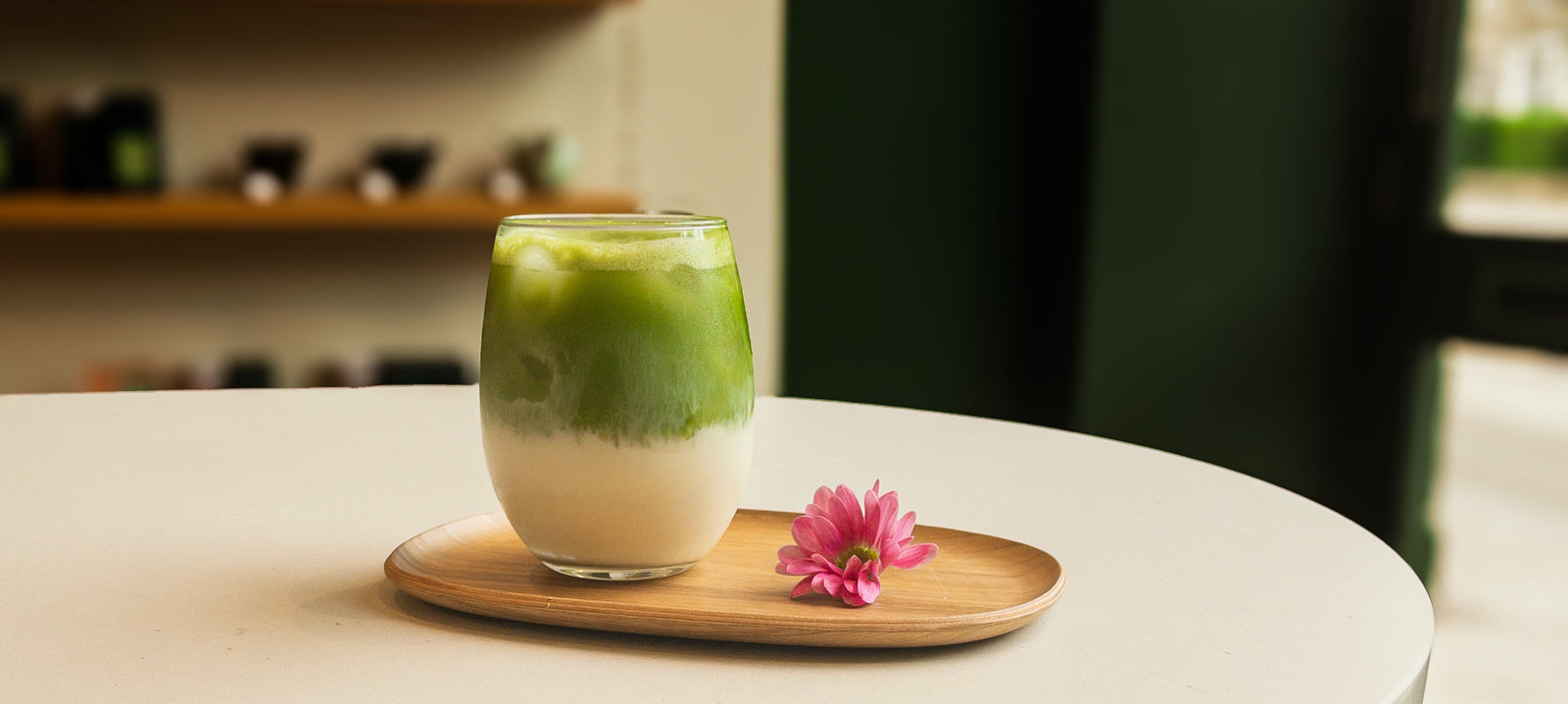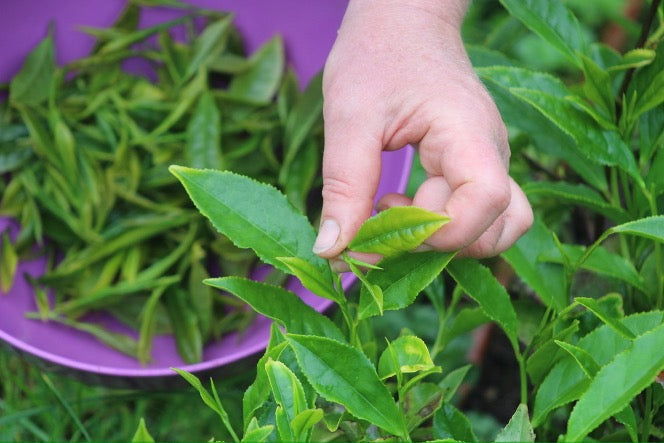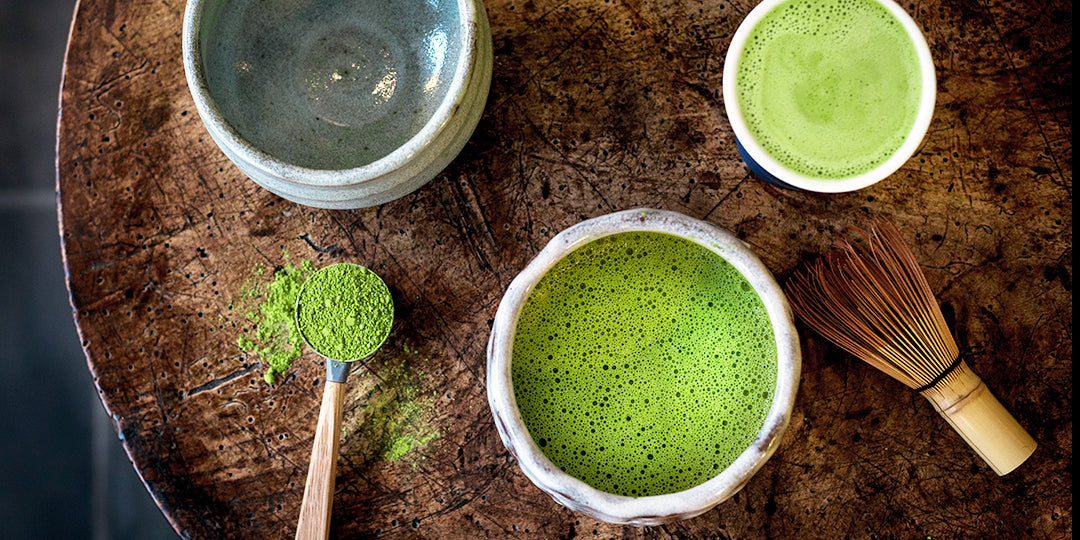Making tea is a greatly controversial topic - every tea culture has its ways of doing things and its rules that must not be broken. Even within the same culture, there are unwritten rules; how much tea should be used, what type of tea is best, do you add milk, if so how much and when, and so on.
In the world of loose leaf teas and in the tea cultures around the world, many different styles have emerged. From the nearly ubiquitous teapot with an infuser to regional specialities like the Indian chai made in boiling milk, through to very niche methods like the Tibetan yak butter teas, there are almost as many ways to make tea as there are people who make tea. We'll be focusing on a few of the most widespread that match to particular types of tea. The culture around preparing tea often has a lot of feedback with what sort of tea gets grown in an area and how it is best enjoyed, and with many teas how you make it really does matter.
Powdered Tea
 We'll start with one of the oldest techniques still in use - powdered tea whisked into hot water in a bowl. This method is mainly used for matcha teas in the modern world, but during the Tang and Song dynasties in China it is how most tea was enjoyed. Originally, tea would have been stored pressed into blocks, with pieces broken off, mashed and then brought to the boil. This method, known as decoction, is today used for some herbal teas as well as Turkish coffee. By the Song dynasty, the more familiar method of grinding the leaf into powder and whisking it into hot water to enjoy had become popular and replaced the decoction method. The result is a very strong infusion which delivers the whole content of the tea leaf to the drinker. At this point in history, tea cultivation spread to Japan, resulting in a unique culture around a distinct tradition of tea emerging there.
We'll start with one of the oldest techniques still in use - powdered tea whisked into hot water in a bowl. This method is mainly used for matcha teas in the modern world, but during the Tang and Song dynasties in China it is how most tea was enjoyed. Originally, tea would have been stored pressed into blocks, with pieces broken off, mashed and then brought to the boil. This method, known as decoction, is today used for some herbal teas as well as Turkish coffee. By the Song dynasty, the more familiar method of grinding the leaf into powder and whisking it into hot water to enjoy had become popular and replaced the decoction method. The result is a very strong infusion which delivers the whole content of the tea leaf to the drinker. At this point in history, tea cultivation spread to Japan, resulting in a unique culture around a distinct tradition of tea emerging there.
Modern Japanese matcha is often grown under shade for the last few weeks before picking, a method which causes the plants to grow more slowly and increase the amount of chlorophyll in their leaves, taking advantage of what little light remains. The result is the leaves turn a darker green, contain more amino acids and carry a stronger flavour. Increased levels of amino acids lead some to speculate on the health benefits of matcha tea, but the flavour alone makes it stand out. The modern preparation method requires three items - a matcha scoop, a whisk and a bowl, or chawan. It is deceptively simple - just place a heaped scoop of matcha into the bowl, add water at around 80°C and whisk until the surface is covered by a froth. Like many simple concepts, getting it exactly right takes a knack that can only really be picked up from doing it, but the result is delightful. The tea and the method are ideally matched developing together over centuries to create the best possible result.
Kyusu - Japanese Teapots

The Japanese tea tradition is similar in many ways to the Chinese one, but in every way carries its own unique twist on things. Teaware is no exception. The two traditions share the same origins, with the early method of tea preparation in tea bowls, or chawan, spreading to Japan during China's Tang dynasty and Japan's Heian period. This period of Japanese history saw Chinese influence on culture, art and society at its peak.
Japanese teaware would diverge onto its own course at the end of this period, with the chawan and powdered tea methods retained in the form of matcha. Full leaf teas became popular in Japan as well, making new teaware styles necessary. In addition to fine ceramics, Japan developed a distinct tradition of cast iron teaware. Originally, unglazed iron pots known as tetsubin were used to heat water that would have been poured into another vessel to actually make tea in the formal setting. This changed with the emergence of full-leaf sencha. Seen as less formal than matcha, this allowed different techniques and presentation styles to emerge. Glazed tetsubin-like teapots, strictly called 'tetsu kyusu', became popular as status symbols in the nineteenth century and remain widespread as a great way to prepare senchas as well as the rarer Japanese black teas and oolongs.
Teapot Methods
 Perhaps the most widespread method of loose tea preparation is the familiar western teapot, either with an infuser or a strainer to catch the leaves when serving. Dating to the Yuan dynasty, established by Kublai Khan, the earliest teapots emerge at a time when Chinese tea culture is going through a renewal. The end of the Yuan dynasty in particular sparked a revival of interest in Chinese traditions and culture as well as a general renewal of anything the Yuan elites were associated with. This included tea, and the Ming period saw a complete redefinition of the way tea was to be enjoyed, drawing a distinction between the earlier, Yuan dominated practices and the new, entirely Chinese ones. The most noticeable change was the shift to using full leaf teas infused more slowly, in teapots. This is the dominant tea culture that existed at the time that tea drinking spread to Europe in the seventeenth century. Porcelain teapots were especially popular, partly because the technology to make porcelain didn't exist in Europe at the time and partly because porcelain can survive exposure to sea water without damage. This made the porcelain teapot a unique item that could only be bought from China and that would actually survive the journey.
Perhaps the most widespread method of loose tea preparation is the familiar western teapot, either with an infuser or a strainer to catch the leaves when serving. Dating to the Yuan dynasty, established by Kublai Khan, the earliest teapots emerge at a time when Chinese tea culture is going through a renewal. The end of the Yuan dynasty in particular sparked a revival of interest in Chinese traditions and culture as well as a general renewal of anything the Yuan elites were associated with. This included tea, and the Ming period saw a complete redefinition of the way tea was to be enjoyed, drawing a distinction between the earlier, Yuan dominated practices and the new, entirely Chinese ones. The most noticeable change was the shift to using full leaf teas infused more slowly, in teapots. This is the dominant tea culture that existed at the time that tea drinking spread to Europe in the seventeenth century. Porcelain teapots were especially popular, partly because the technology to make porcelain didn't exist in Europe at the time and partly because porcelain can survive exposure to sea water without damage. This made the porcelain teapot a unique item that could only be bought from China and that would actually survive the journey.
These early teapots were mainly decorated with a blue and white underglaze and would have made the journey from China in the lower holds of leaky, fairly unsafe ships with tea packed above in the hope that most of it would stay dry. This trade continued until the end of the Ming dynasty, at which point the new Qing dynasty would ban the export of porcelain from China. This led to a panic, to the emergence of Japanese porcelain where the technology also already existed and to the invention of a number of European ceramic techniques and styles replicating and imitating Chinese porcelain.
The traditional rounded 'teapot shape' that we are all familiar with emerged in the nineteenth century as tea drinking became more common outside the elites, and since then there have been many variations on it. These pots allow tea to infuse and open up fully in the pot, making for a stronger infusion than when the leaves are more restricted. More recently, glassware teapots have become popular, and these remain very suitable for preparing green teas and floral infusions where there is also a visual element, watching the petals and leaves swirl in the hot water.
Gaiwan Style
This method uses a different vessel for infusing full leaf teas, the gaiwan. The name means literally, lidded bowl, and is a very versatile piece of equipment. Gaiwan type teaware first emerges in the early Ming dynasty around the same time that the first teapots were being made, and form part of the renewal of tea culture in China at that time. The gaiwan is considered particularly useful for green and white teas, as the large lid and open structure allows heat to escape quickly. This does mean that it is not as useful a way to make and enjoy black teas, because the water tends to cool down too quickly for the infusion process, but especially for white teas this means that the tea is not overheated during preparation.
Gaiwan are also considered the ideal way to enjoy most oolongs that have not been roasted. These can be infused multiple times and the gaiwan is a great way to do this, using the gaiwan itself to infuse the tea and then decanting into another container or into cups. The decanting process is a little complicated, with a thumb and second finger grip used on the rim of the gaiwan to hold the vessel while the index finger keeps the lid secure. There is again a knack to it, and perhaps the only way to really learn how to do it without having to deal with hot water getting to your fingers is to have it go wrong a few times. Luckily, most oolongs and especially green and white teas do not call for boiling water, so the danger is not great.
Gongfu Style
 The exception to the rule that gaiwan are better than teapots for preparing teas that benefit from multiple infusions are the small, clay teapots often used in the gongfu tea ceremony. Although the ceremony can be performed with gaiwan or with porcelain teapots, the most popular way to do it is with small, unglazed clay pots. A good gongfu teapot will absorb some of the flavour of each tea prepared in it, resulting in a unique twist on each flavour provided by a much-used pot. For this reason, it is important to be careful and not prepare flavoured teas in one, or to use scented detergents or soaps when cleaning the pot. A hot water rinse is enough, provided that any fragments of leaf are physically removed from the pot.
The exception to the rule that gaiwan are better than teapots for preparing teas that benefit from multiple infusions are the small, clay teapots often used in the gongfu tea ceremony. Although the ceremony can be performed with gaiwan or with porcelain teapots, the most popular way to do it is with small, unglazed clay pots. A good gongfu teapot will absorb some of the flavour of each tea prepared in it, resulting in a unique twist on each flavour provided by a much-used pot. For this reason, it is important to be careful and not prepare flavoured teas in one, or to use scented detergents or soaps when cleaning the pot. A hot water rinse is enough, provided that any fragments of leaf are physically removed from the pot.
Gongfu-cha means 'making tea with skill', and forms the core of the Chinese tea ceremony. The method uses a small teapot, a fairpot and a range of serving cups set on a tray to catch excess water used during preparation. The pot is pre-heated and emptied, tea is added and hot water poured into the pot. The lid is placed on the pot, more hot water is poured over the pot and then the tea is allowed to infuse. For an unglazed pot, one rule of thumb is to wait until the water poured over the top has appeared to dry. When it is ready, the tea is poured into the fairpot. This is another small jug, named fairpot as it is intended to mix all the tea from the pot to make sure that each serving cup gets the same strength of tea rather than the last cup poured getting a strong tea while the first gets a weaker one. The fairpot is then used to serve tea into cups, serving guests first according to whatever order seems appropriate for the occasion, and then the process is repeated as many times as the tea drinkers wish or until the leaves are exhausted.
Among the best teapots to use in a gongfu tea preparation are Yixing clay pots. These are made using the distinctive red clay from Yixing in southern Jiangsu Province. The city of Yixing sits on the Yangtze River Delta and enjoys access to some of the best clays used in stoneware of this type available anywhere. Similar clays are available elsewhere in China and the world, with two good examples being Chaozhou in Guangdong Province, or Tokoname in Japan's Aichi Prefecture, where teaware of equal or perhaps even greater quality is made. That said, Yixing remains perhaps the most famous centre of this style of ceramics and produces many beautiful pieces.
The Gongfu tea ceremony is another example of preparation methods matching particular teas. Because the pot retains heat well, and because of the tendency to absorb flavour profiles, the gongfu tea method is very good for preparing black teas, roasted oolongs and pressed fermented teas like pu-erh. These teas all benefit from multiple infusions, and the gongfu method encourages a rich and flavourful infusion in a short amount of time without exhausting the leaves too quickly. While it is possible to prepare green or white teas in these pots, to enjoy them care would have to be taken with water temperature and infusion length to avoid getting a bitter, astringent result and also to avoid having the different flavour profiles absorbing into the pot and creating a confused flavour result.
So, there are many ways to enjoy tea and many different styles of teaware that might be suited to different styles of tea. Although centuries of experience, lore and tradition give us suggestions as to what might work best, there is really no substitute for experience. The best thing to do is to explore and see what suits.

